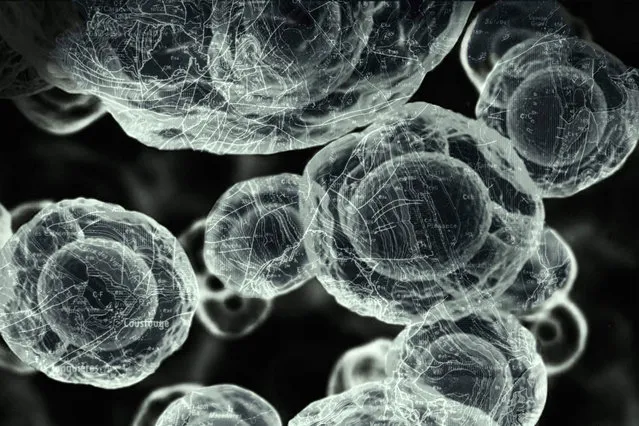
The shortlist for the Royal Photographic Society’s science photographer of the year competition will be exhibited at the Science Museum in London from 7 October until 5 January. Here: Mapping Oxygen by Yasmin Crawford, her final major project for an MA in photography at Falmouth University, which focused on examining the research behind myalgic encephalomyelitis. Through exploration of perspective, complexities and scientific multidisciplinary collaborations, Crawford says she creates imagery that explains, reveals and connects us consciously to the ambiguous and unknown. (Photo by Yasmin Crawford/2019 Science Photographer of the Year/RPS)

Soap Bubble Structures by Kym Cox. Bubbles optimise space and minimise their surface area for a given volume of air. This phenomenon makes them a useful tool in many areas of research, in particular, materials science and “packing” – how things fit together. Bubble walls drain under gravity, thin at the top, thick at the bottom, which interferes with travelling lightwaves to create bands of colour. Black spots show the wall is too thin for interference colours, indicating the bubble is about to burst. (Photo by Kym Cox/2019 Science Photographer of the Year/RPS)
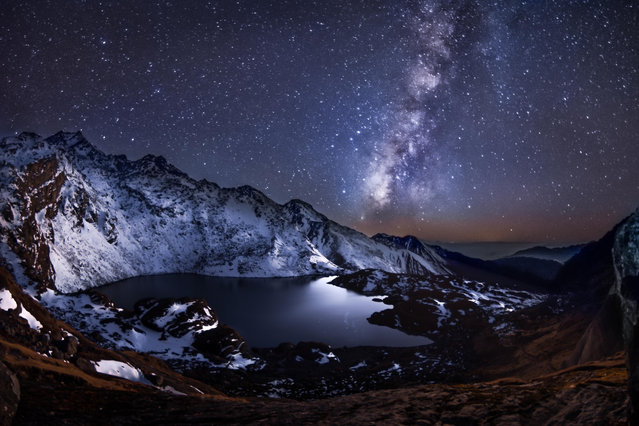
Calmness of Eternity by Yevhen Samuchenko was taken in the Himalayas in Nepal at Gosaikunda lake at 4,400m. The Milky Way is the galaxy containing our solar system, with the name describing the galaxy’s appearance from Earth: a hazy band of light seen in the night sky formed from stars that cannot be individually distinguished by the naked eye. (Photo by Yevhen Samuchenko/2019 Science Photographer of the Year/RPS)

Safety Corona by Richard Germain. A safety pin is connected to a high-tension AC generator to make the pin ionise the air around it. When the electrons fall back on an atom, the excess energy is emitted as photons, which generate the corona glow around the pin. The fuzziness of the pin is because the camera did not actually capture light reflected on the pin but rather the light emitted by the ionisation around it. (Photo by Richard Germain/2019 Science Photographer of the Year/RPS)
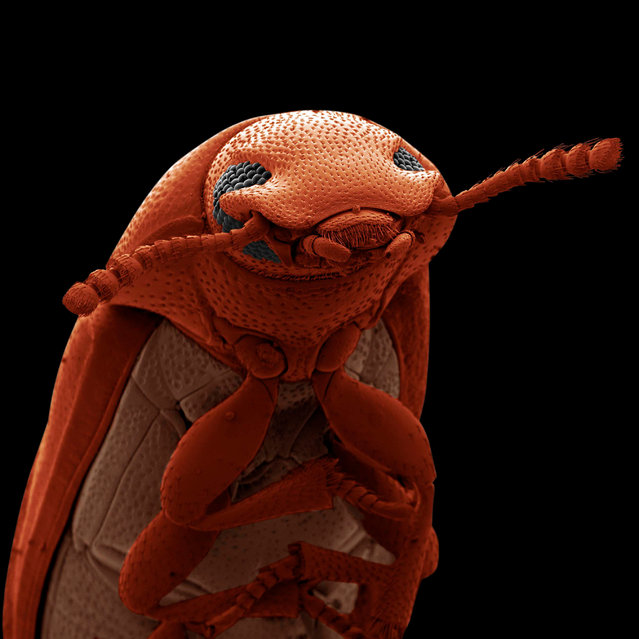
Confused Flour Beetle by David Spears. This small beetle is a pest in stored grain and flour products. The image was captured by a scanning electron micrograph and was then coloured in Photoshop. (Photo by David Spears/2019 Science Photographer of the Year/RPS)
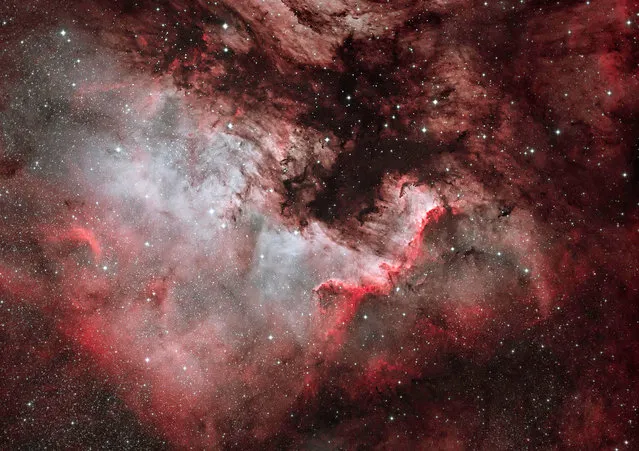
North America Nebula by Dave Watson. The North America Nebula, NGC7000, is an emission nebula in the constellation Cygnus. The remarkable shape of the nebula resembles that of the continent of North America, complete with a prominent Gulf of Mexico. (Photo by Dave Watson/2019 Science Photographer of the Year/RPS)
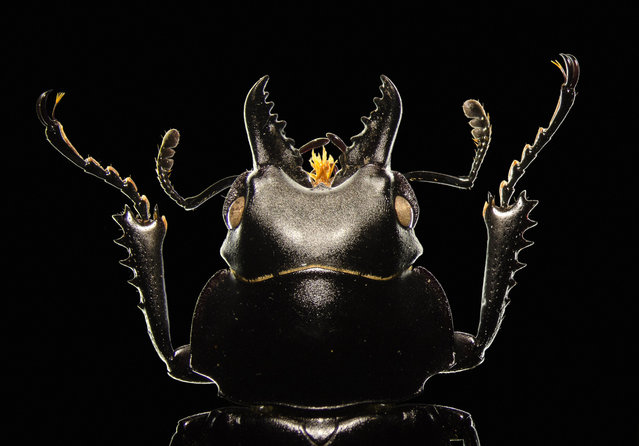
Stag Beetle by Viktor Sykora. The photographer used light microscopy with a magnification of five times. (Photo by Viktor Sykora/2019 Science Photographer of the Year/RPS)
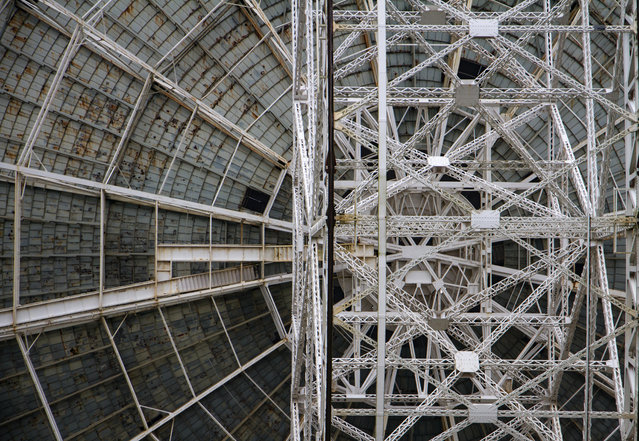
Lovell Telescope by Marge Bradshaw. I have been fascinated with the Lovell Telescope at Jodrell Bank since I went on a school trip, says Bradshaw. She wanted to take a series of closer, more detailed shots, showing the wear on it, she adds. (Photo by Marge Bradshaw/2019 Science Photographer of the Year/RPS)
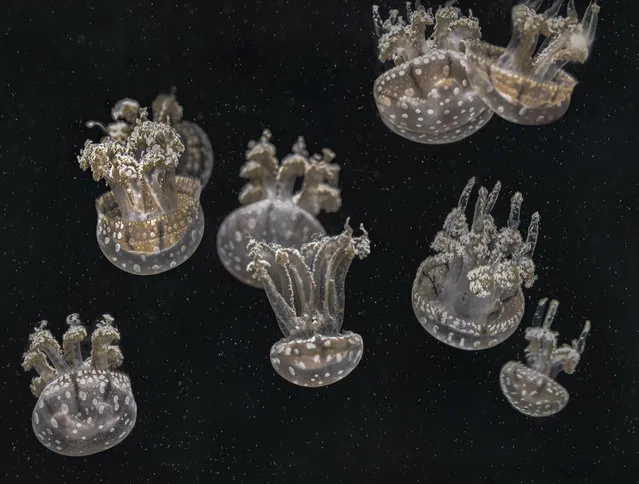
Upside Down Jellyfish by Mary Anne Chilton. Instead of swimming, this species spends its time pulsing up and down in the water. Jellyfishes’ colour comes from the uptake of algae in the water. (Photo by Mary Anne Chilton/2019 Science Photographer of the Year/RPS)
15 Aug 2019 00:03:00,
post received
0 comments
